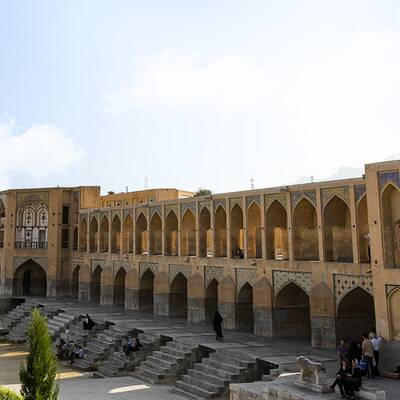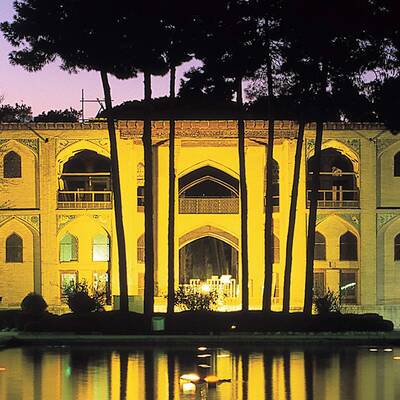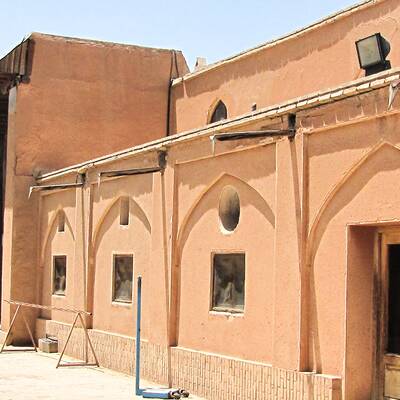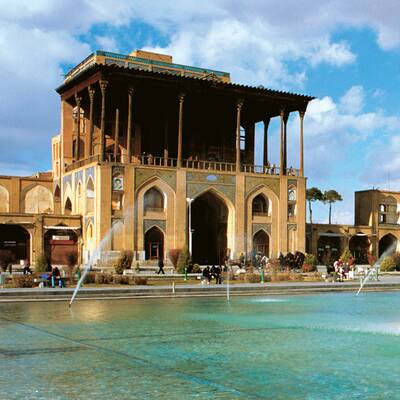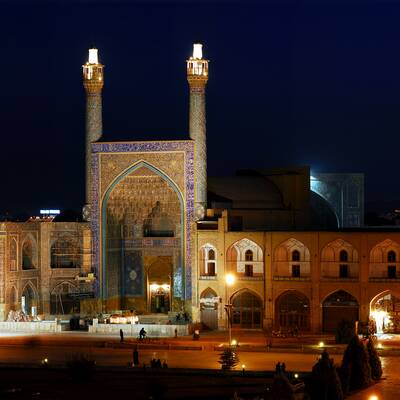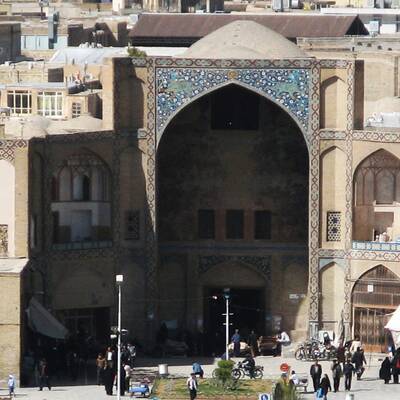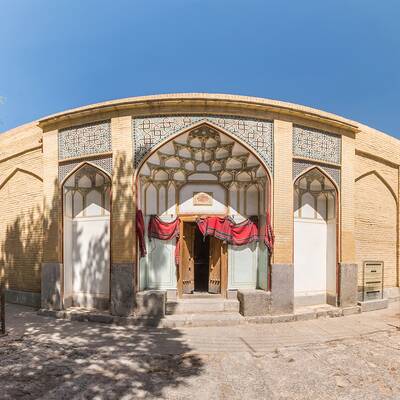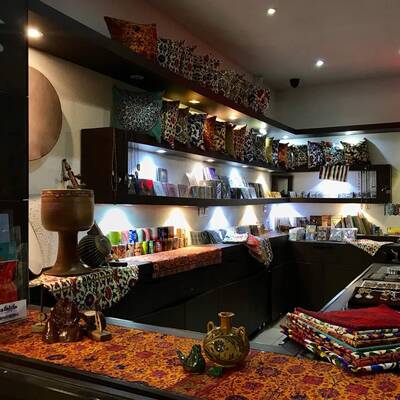
Chehel Sotoon Museum (Isfahan)
IsfahanChehel Sotoon Garden is one of the vast gardens established during the reign of Shah Abbas I (996-1038 AH) in Isfahan. However, most of the buildings and halls within it are attributed to the period of Shah Abbas II, the seventh king of the Safavid dynasty, who used it as a summer palace and his official reception venue. According to a historical inscription discovered in 1327 SH, the construction of Chehel Sotoon Palace was completed in the fifth year of Shah Abbas II's reign in 1057 AH, and Sa'eb, the court poet of Shah Abbas II, described the stages of its construction in a long poem.
The name "Chehel sotoon" derives from the abundance of columns in this palace, as in Iran, the number forty often represents abundance and multiplicity. Coincidentally, the number of columns in the Chehel Sotoon Hall is twenty, and the reflection of the palace and its columns in the pool facing the building, making the concept of "Chehel sotoon" meaningful. Each of the twenty columns of the hall is made of the trunk of a plane tree, which was previously covered with mirrors and colored glasses. The palace walls were adorned with antique mirrors, colorful glasses, and beautiful paintings, and all doors and windows were intricately carved and engraved. The walls are half covered with white marble and the other half with colorful mirrors and glasses. This building was converted into a museum in the month of Mehr in 1327 SH. This museum is the second oldest museum in Iran after the Golestan Palace. During the restoration work carried out in 1335 SH, the museum objects were temporarily relocated to another place. In the restoration process of the building, several paintings were discovered under the plaster in three rooms of Chehel Sotoon Palace, which attracted a lot of attention. One of these rooms features a grand royal assembly with twelve miniature portraits of Shah Abbas the Great, wearing a special crown, along with images, miniatures, and golden plant and flower paintings, all of which were created by the renowned artist Reza Abbasi, who was commissioned by Shah Abbas. Finally, in 1367 SH, Chehel Sotoon Palace was once again converted into a museum. The museum showcases calligraphic manuscripts, paintings, and decorative and functional objects from the Islamic era, especially the Safavid period. Periodic exhibitions are held to commemorate various occasions. The collections of Chehel Sotoon Museum include a set of tiles from the earliest examples of Isfahan tiles, a collection of painted ceramics, carpets, Kufic Qur'anic manuscripts, prehistoric coins, various wedding dowries from the 9th century to the end of the Qajar period, and various inscribed stones.
